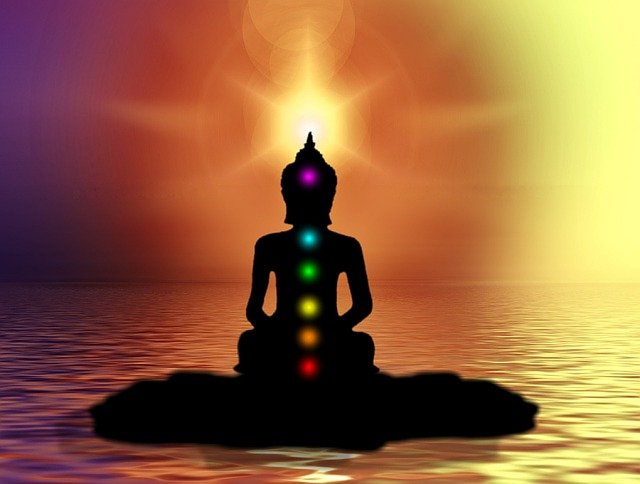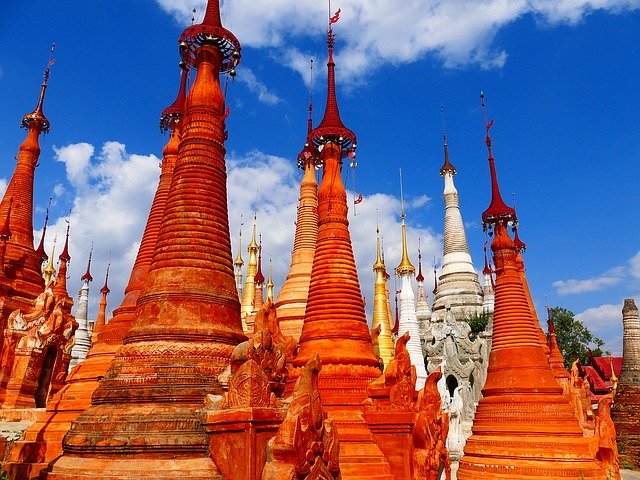These are the most common of terms that come up in texts or lessons in Buddhism. But the cool thing is that they are actually used often in many daily conversations. Most of these terms originate in Pali or Sanskrit!

Terms
Afflictive Obscurations: The Obstacles to an individuals liberation.

Aggregates: Combined make up the mind and body of all sentient beings
Anapanasati: Mindfulness Of Your Breathing
Anatta: Not self, or non soul
Arahant: An Enlightened one who is no longer bound to samsara and has rid them selves of mental delusions.
Arhat: One whom has released them selves from the cycle of rebirth.
Anicca: Impermanence
Bardo: The state between death and rebirth. This is sometimes referred to as the "intermediate state."
Bhikkhu (Bhikshu): A fully ordained Buddhist monk
Bhikkhuni: A fully ordained Buddhist nun

Bodhi (Bodhi Tree): Enlightenment and awakening .
Bodhicitta (Bodhicitta Mind): This is the path one takes to reach enlightenment in order to benefit all sentient beings
Bodhisatta/Bodhisattva: One who has taken a vow to become a fully enlightened Buddha and there only goal is to benefit others
Brahma: God
Brahmin: High Indian cast within the old systems
Buddha: Fully awakened and usually referring to the historical Buddha, Sakyamuni.
Buddha-Dharma/Dhamma: The teachings of the Buddha
Dana: The practice of giving; generosity.
Dhammapada: The best known of all the Buddhist scriptures that focuses on the value of ethical conduct and mental training.
Dharma/Dhamma/Buddha-dharma: The teachings of the Buddha.
Dukkha: Suffering.
Ego: The pattern of conditioned habits that we mistake for a sense of self
Emptiness: The lack of inherent existence in phenomena.
Four Noble Truths: First teachings of the Buddha once he reached the state of enlightenment.
Jhana: An extreme or strong concentration. Single-pointedness.
Karma/Kamma: The law of cause and effect.
Kilesa: Delusion of the mind hindering meditation.

Karuna: Compassion.
Merit: The auspicious power of wholesome action that brings positive karmic results
Metta: The buddha taught that to counter act feer one must have this. Loving kindness and other practices for generating loving kindness.
Middle way: The Buddhist path that avoids either extreme of self-mortification as well as self-indulgence.
Mindfulness: Being aware of ones thoughts, emotions and reactions. Can be used as a meditation and is an ingrediant to meditation.
Mudra: The hand shape/gesture of hands
Naga: A spirit of the natural environment
Nirvana/ Nibbana: This is the result of removing attachments, hate and deductions. These causes suffering.
Renunciation: The wish to end ones own samsara
Pali: The ancient language of the scriptures of Theravada Buddhism
Panna: Wisdom
Parami : Qualities of a Buddha.
Precept: Ethics and foundations for meditations.
Puja: A offering, prayer or altar.
Saddha: Faith andconfidence.
Samadhi: A deep state of concentration meditation.
Shamatha: The calming of the mind. This can be accomplished by a practice of mindfulness as well as single-pointedness meditation.
Samaya: Commitment or vow.
Samsara: The cycle of rebirths.
Sangha: The Buddhist community.
Sati: Mindfulness.

Skillful means: Actions based on kindness, respect, truthfulness, timeliness and wisdom.
Stupa: Shrine or altar.
Sutta/Sutra: The teachings and traditions of the Buddha.
Theravada: Southeastern Asian tradition of Buddhism. "Path of the Elders." Vipassana meditation is a central part of this tradition.
Three jewels of refuge:The Buddha, the Dharma and the Sangha.
Tantra: Buddhas teachings in the Vajradhara tradition.
Vinaya: Discipline and doctrine governing the Buddhist monks and nuns.
Vipassana: Insight meditation where you are aware of everything in the moment.
Yogi: Someone who is on the path of spiritual awakening. One whom meditates.


Nice detailed explanations my dear brother @nicnas. Many are similar to Sikhism, you will see in the future!
I look forward to it.. Thank you for stopping by my friend.
Nice succinct list of the key terms. 'Shamatha' would be a nice addition to the definitions in my humble opinion. All the best in whatever you do
NameasteSince I believe in mindfulness as the ultimate practice you would think I would have included that right? Thanks for the recommendation and I am very glad that you stopped by and reminded me. I agree that the single-pointedness of the mind and doing everything is the best of our abilities (100%) at all times is important. Thank you again @encapture .
All these can be understood by activating the chakras by meditation i.e dhyan
For sure @ashutoshkumar . Thank you for checking this out.
Namaste
Thanks for spreading some dharma!
Peace, Abundance, and Liberty Network (PALnet) Discord Channel. It's a completely public and open space to all members of the Steemit community who voluntarily choose to be there.Congratulations! This post has been upvoted from the communal account, @minnowsupport, by NicNas from the Minnow Support Project. It's a witness project run by aggroed, ausbitbank, teamsteem, theprophet0, and someguy123. The goal is to help Steemit grow by supporting Minnows and creating a social network. Please find us in the
If you like what we're doing please upvote this comment so we can continue to build the community account that's supporting all members.
LOVE YOU LONG TIME!
click here!This post received a 1.7% upvote from @randowhale thanks to @nicnas! For more information,